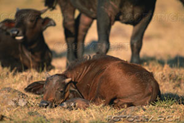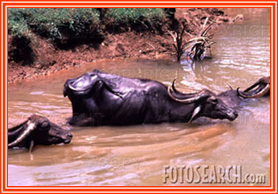Authors: A.S.Gawali*, N. S. Chavan, S. S. Kharade
Email :a.s.gawali@kkwagh.edu.in
(Assistant Professor, K. K.Wagh College of Agricultural biotechnology, Nashik.)
Article Summary
• Developing of national livestock sector depends on the possession, reservation,and livestock resource both those improved or unimproved breed. Buffalo (Bubalus bubalis) is one of ruminantia livestock which has special advantages to improve such as that it can survive with the low quality food, and its existence has been united with the social life
• Buffalo production of the traditional management applied by farmers has many advantages as the traditional farming tool, meat, organic fertilizer, leather, and social-culture equipment.
• That why its important to carried out management practices on the farm.
Breeding management
• Problems in breeding
1. Seasonal breeders (from oct. to Feb.)
2. Silent heat
3. Repeat Breeding
4. Short reproductive cycle i.e. 21 days
5. Highly affected during summer
Management ---- Seasonal breeding
- Heat detection
- Protection from thermal stress
- Adequate & balanced ration
- Insemination at optimal time with good quality semen
Management of silent heat
- Managemental attention
- Protection from direct solar radiations
- Parading of teaser bull
- Painting of Lugol's Iodine
- Use of estrogen & progesterone in Anoestrus & sub-estrus cow
- Use of prostaglandin
Repeat Breeding
• Cow or buffalo having normal oestrus, oestrus cycle & reproductive tract failed to conceive
REASONS:-
• failure of fertilisation, anovulation & delayed ovulation, early or latent embryonic mortalitis, poor breeding & management techniqes
MANAGEMENT:-
1.Antibiotic treatment
2. Daily examination of repeaters
3. Improved feeding & management
4. Providing hygienic surrounding at the time of Calving
5. Ascepting precautions at the time of insemination
6. Educating farmers on detection of heat
Health Management

Problems:
1. Calf mortality
Reasons-
• Antibodies are not transferable from dam to fetus through placental membrane
• Meteorological influences
• Certain diseases (Pneumonia, Enteritis)
• Defective management
2. Susceptibility to diseases (FMD, BQ, HS)
3. Heat stress
• Less tolerance to high temperature
• Black skin colour
Management (Health)
Housing is one of the important factor
Feeding colostrum
• Colostrum-milk secreted by udder immediately after parturition and for following 3-5 days
• Composition of colostrum->20% protein, a little more fat,10-100 times more vit.A,3 times more vit.D
• Function-natural purgative for the calf, cleaning from intestine accumulated faecal matter
Feeding antibiotics under the guidance of veterinary doctor
Feeding milk replacer-
Milk replacer-
A feed material for young animals which has many of the nutritive characteristics of milk, is fed in fluid form, & contains an appreciable level of non fat dry milk solids
Constituents- (How it prepared?)
Wheat, fish meal, linseed meal, milk (DM), coconut oil, linseed oil, citric acid, molasses, mineral mixture, butyric acid, antibiotic mix., Rovimix A, B2,D3
Wallowing-

• It means rolling or floundering in mud or in water
• Regulate body temperature & control parasites
• Also sprinkling of cool water on body, in shed, providing cool water for drinking helps to regulate body temperature
Nutritional management
• Buffaloes are more efficient converters of low-grade roughages
• Nutritional requirement of buffalo-
The metabolic energy requirement:
• (a) for maintenance ranges from 97.8 to 188.8 Kcal/W0.75 kg in dry & lactating buffaloes
• (b) for milk production ranges from 1171 to 1863 Kcal/Kg 4%FCM
The DCP requirement:
• (a) for maintenance in dry & lactating animals ranges from 1.28 to 3.48 g/kg W0.75 kg
• (b) for milk production ranges from 126.6 to 166.34g/100 g of protein secreted in milk
The dry matter intake of buffalo is 85-90 g /kg metabolic body size and it is lesser than that of cattle
About Author / Additional Info: